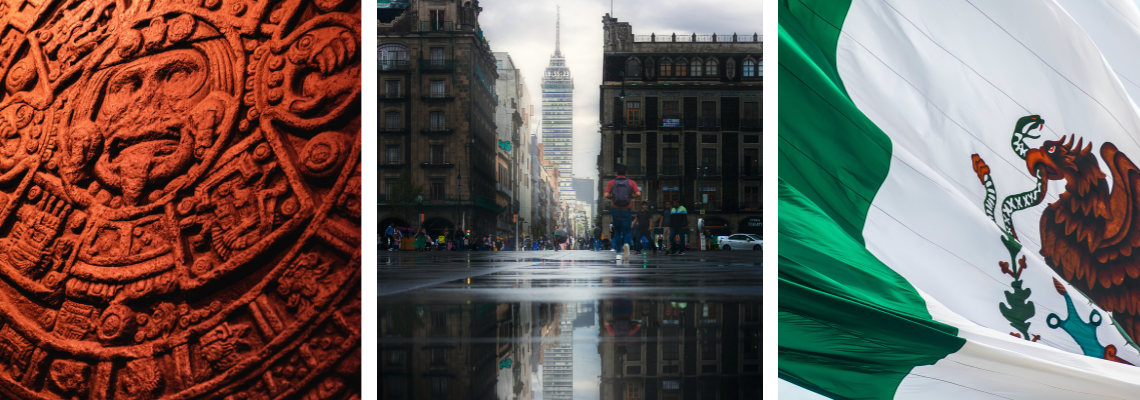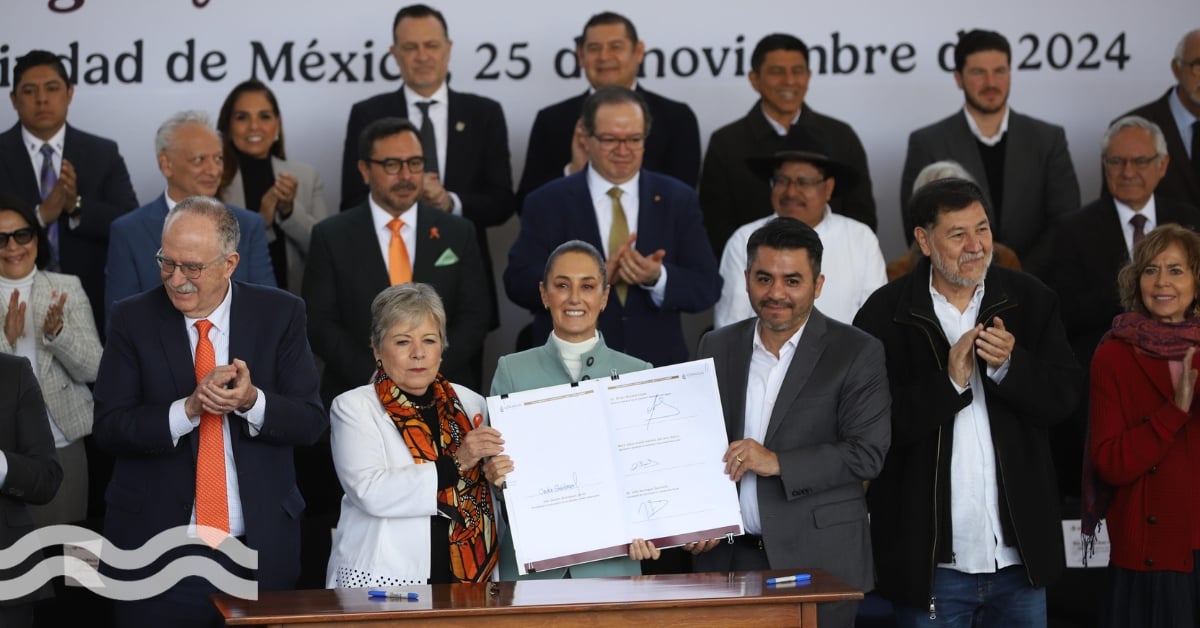Mexico City’s water challenges: the impact of building on an aquifer
Ahead of Aquatech Mexico happening later this year, we look at this unique city's history from ancient Aztec-designed water infrastructure to the consequences of groundwater overextraction.
Aztec architecture to Spanish destruction
Home to over 22 million people, Mexico City is steeped in rich history and, according to a recent study, currently sinking at a rate of twenty inches per year.
In order to understand the water challenges of the present, it’s important to look back to the city’s past.
The capital of Mexico was founded between 1325 and 1327 during the beginning of the Aztec period - a Mesoamerican culture that thrived in central Mexico in the post-classic period from 1300 to 1521.
The city was built on a group of islands in the centre of the inland lake system of the Valley of Mexico called Lake Texcoco, above an aquifer.
Lake Texcoco seemed to positioned ideally, due to the large amounts of natural freshwater and, as a result, the city began to flourish and the population boomed.
The Aztecs built dikes to separate the freshwater used to raise crops in chinampas and to prevent recurrent floods.
Fast forward to 1521 and the siege of Tenochtitlan by the Spanish brought an end to the Aztec period and began the current water challenges.
During the siege, the Aztec dikes were destroyed leading the city once again open to flooding.
One of the main issues the Spanish encountered during its colonisation was that the valley has no natural drainage outlet for the waters that flow from the mountainsides, making the city vulnerable to flooding.
It was in the 17th century that the Spanish decided the best cause of action to prevent flooding of the city was to regularly drain the lake through the use of canals and tunnels.
Today, only a small section of the original lake remains, located outside Mexico City, in the municipality of Atenco, State of Mexico.
But this was just the start of Mexico City's water challenges.
Paying the price of over-extraction
In 1900, the population of Mexico City was at around 500,000 and over the century, the city began to grow rapidly.
By the time the 1980s rolled around, half of all the industrial jobs in Mexico were located in Mexico City.
Due to this rapid growth, the Mexico City government could barely keep up with services.
Villagers from the countryside continued to pour into the city to escape poverty, in the process accelerating water demand.
With no housing available, they took over lands surrounding the city, creating huge shantytowns that extended for many miles which led to serious water pollution issues and subsidence due to over-extraction of groundwater.
While the lake was drained in the 17th century, the city today sits on the lake bed, a heavily saturated body of clay that is collapsing due to the over-extraction of groundwater.
“Mexico City is sinking at rate of 20 inches every year.”
A study from the Journal of Geophysical Research: Solid Earth found that since the beginning of the 20th century the city has sunk as much as nine meters.
On average, it concluded that Mexico City is sinking at rate of 20 inches every year. This sinking is causing problems with runoff and wastewater management, leading to flooding problems, especially during the summer.
However, unlike subsidence seen in many other cities of the world, Mexico City’s subsidence does not seem to reflect local groundwater pumping rates, as would be expected.
Instead, it reflects the steady compacting of the ancient lakebed on which the city was built.
As water extraction drove groundwater deeper underground, the 100-meter-thick, salty, clay-rich lakebed was left high and dry.
Its fine mineral grains have since been steadily repacking themselves more tightly, causing the ground to shrink and subside. This kind of compaction is irreversible, and the study determines that it’s responsible for the appearance of extensive fractures that damage buildings, historical sites, sewers, and gas and water lines in the city.
The fracturing is also causing surface water to become contaminated which could make access to clean water in the city, which is already difficult, even worse.
Countdown to Day zero
Mexico City is one of 11 cities that is predicted to reach a Day Zero event soon, similar to a warning to the city of Cape Town in South Africa.
Despite heavy flooding and rainfall, the city is facing a water shortage. Currently, 20 million residents do not have enough water to drink for nearly half the year.
And according to the BBC, one in five people have access to only a few hours of running water from their taps a week and 20 per cent have running water for part of the day.
“Mexico City is one of 11 cities that is predicted to reach a Day Zero event soon.”
Current projections estimate that global demand for freshwater will exceed supply by 40 per cent in 2030 – a year when Mexico City’s population is expected to reach 30 million.
Additional challenges include old and leaking pipes in Mexico City. According to the University of Pittsburgh, Mexico City loses 1,000 litres of water per second because of an outdated water system that is being crushed by the falling city and punctuated by thousands of small leaks.
While rainwater harvesting has been touted as an option and is implemented in areas where it does rain the water often mixes with sewage and cannot be used.
Hope on the horizon
Mexico City initiated the Green Plan project, which will run until 2022 with goals such as reducing groundwater losses and repairing water infrastructure.
Former President Enrique Peña Nieto signed a series of presidential decrees in 2018 to create water reserves in nearly 300 river basins throughout the country.
In 2019, $7.4 billion was invested into mitigating the water crisis by Mexico City Mayor Claudia Sheinbaum Pardo.
Innovation is needed from international experts. Collaboration is required, together with water strategy to guide Mexico City through what is going to be a difficult decade ahead.
Related content
Share your water technology stories with us
Do you have an innovation, research results or an other interesting topic you would like to share with the international water technology industry? The Aquatech website and social media channels are a great platform to showcase your stories!
Please contact our Sr Brand Marketing Manager Annelie Koomen.
Are you an Aquatech exhibitor?
Make sure you add your latest press releases to your Company Profile in the Exhibitor Portal for free exposure.
We promise never to send you spam and you can unsubscribe at any time!

.jpg?h=628&iar=0&w=1200)

